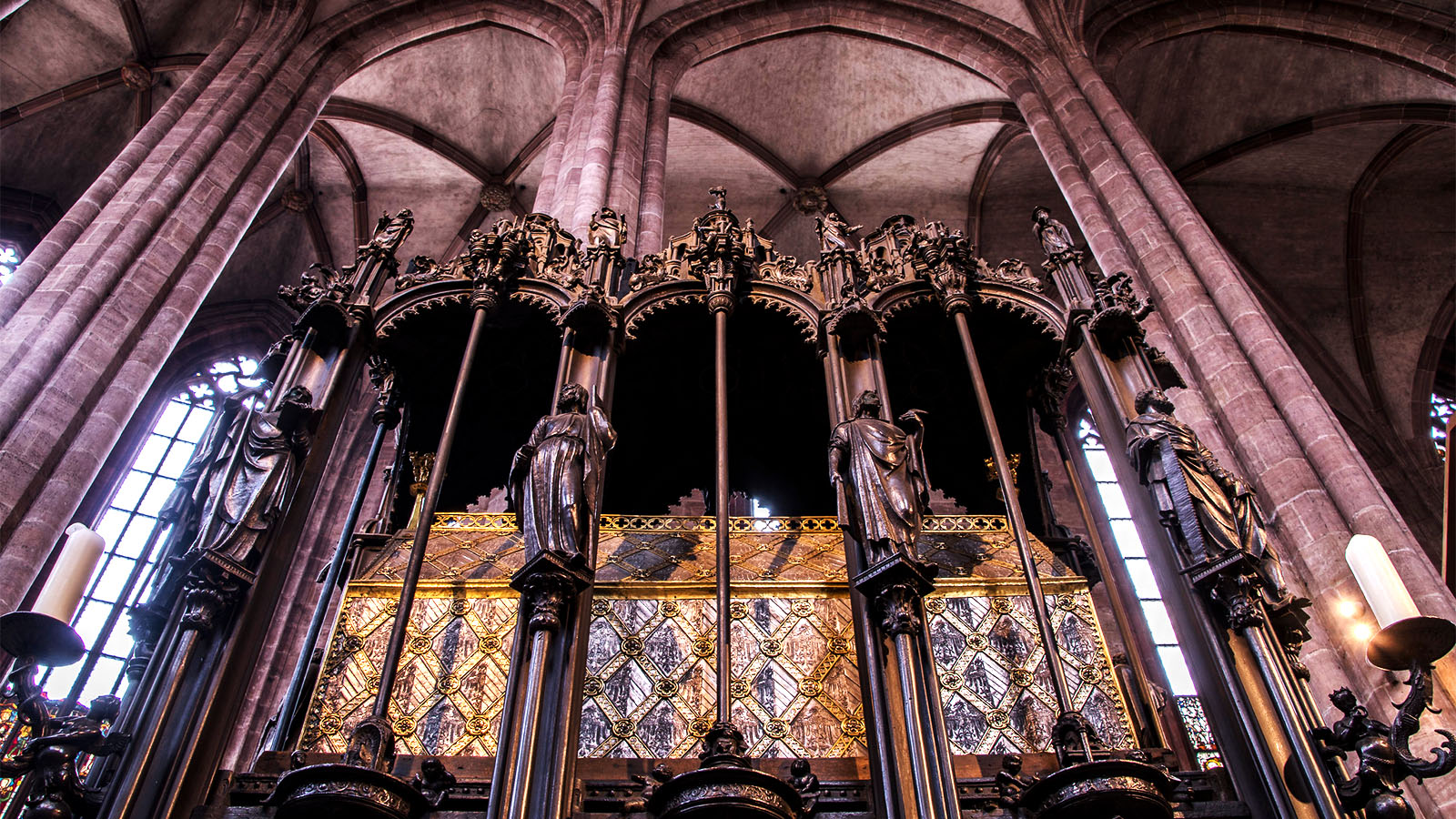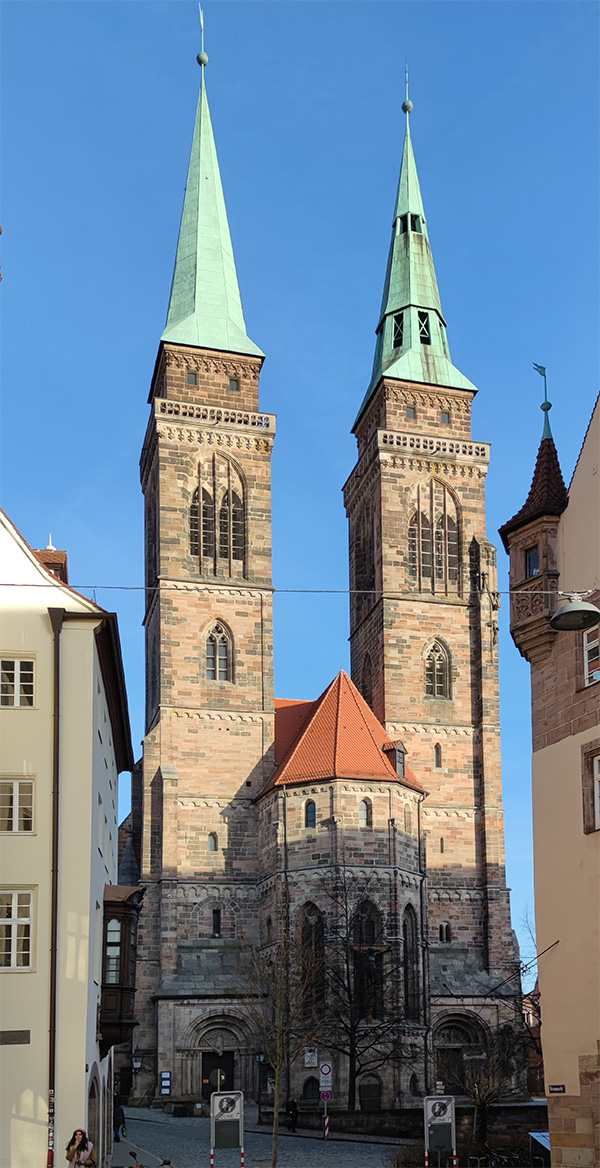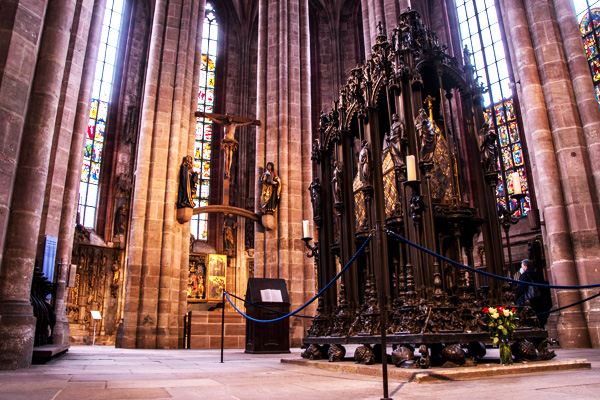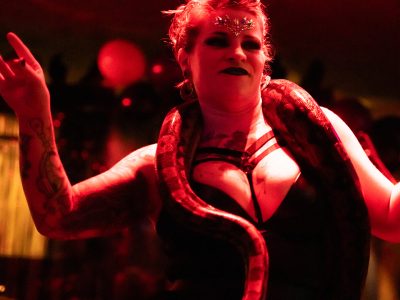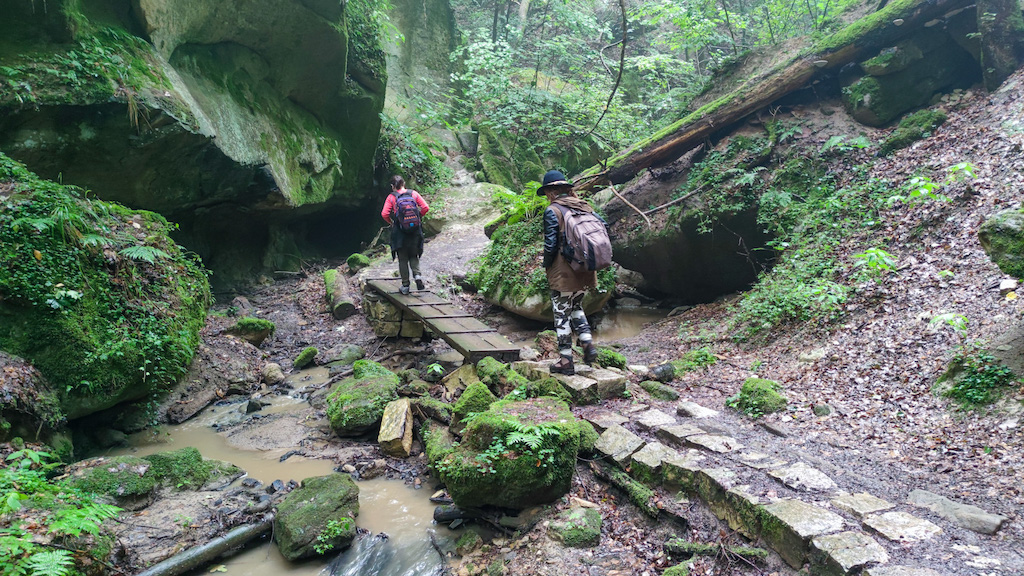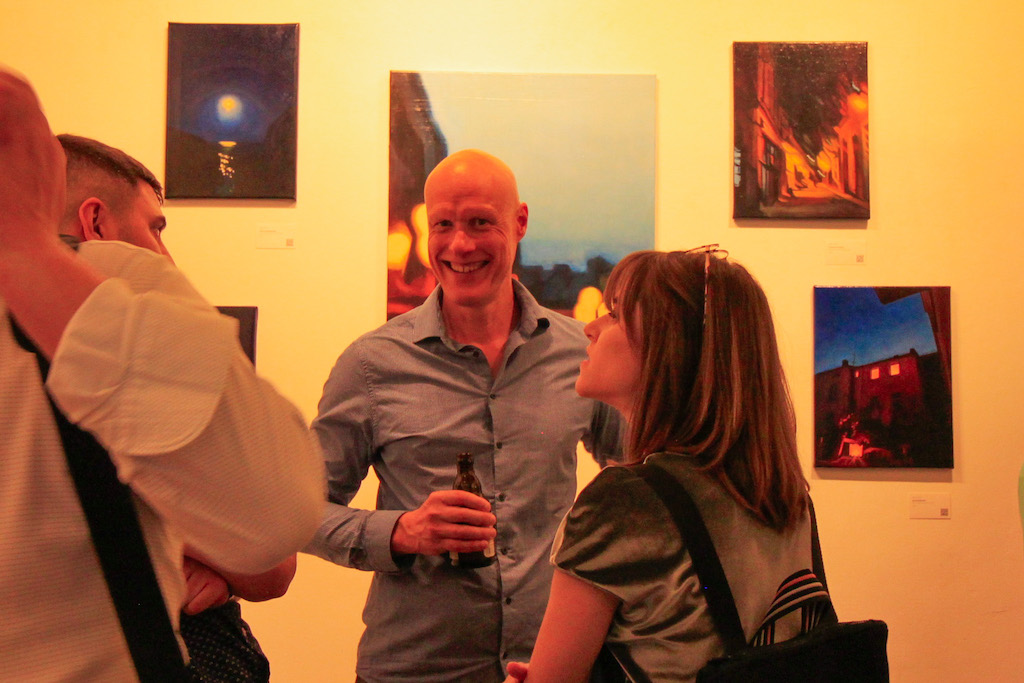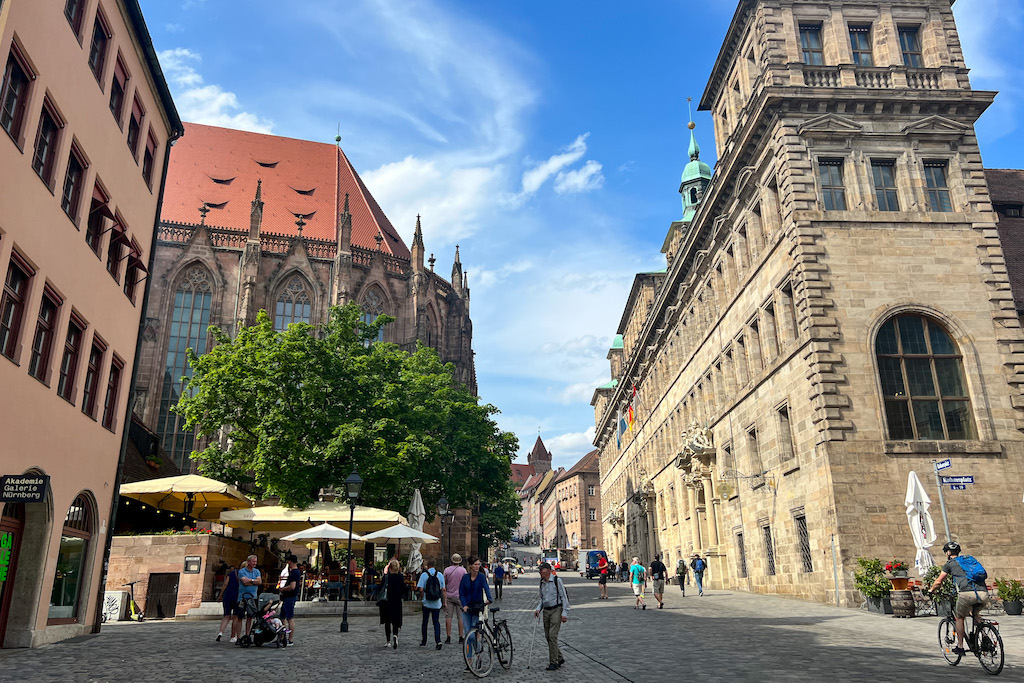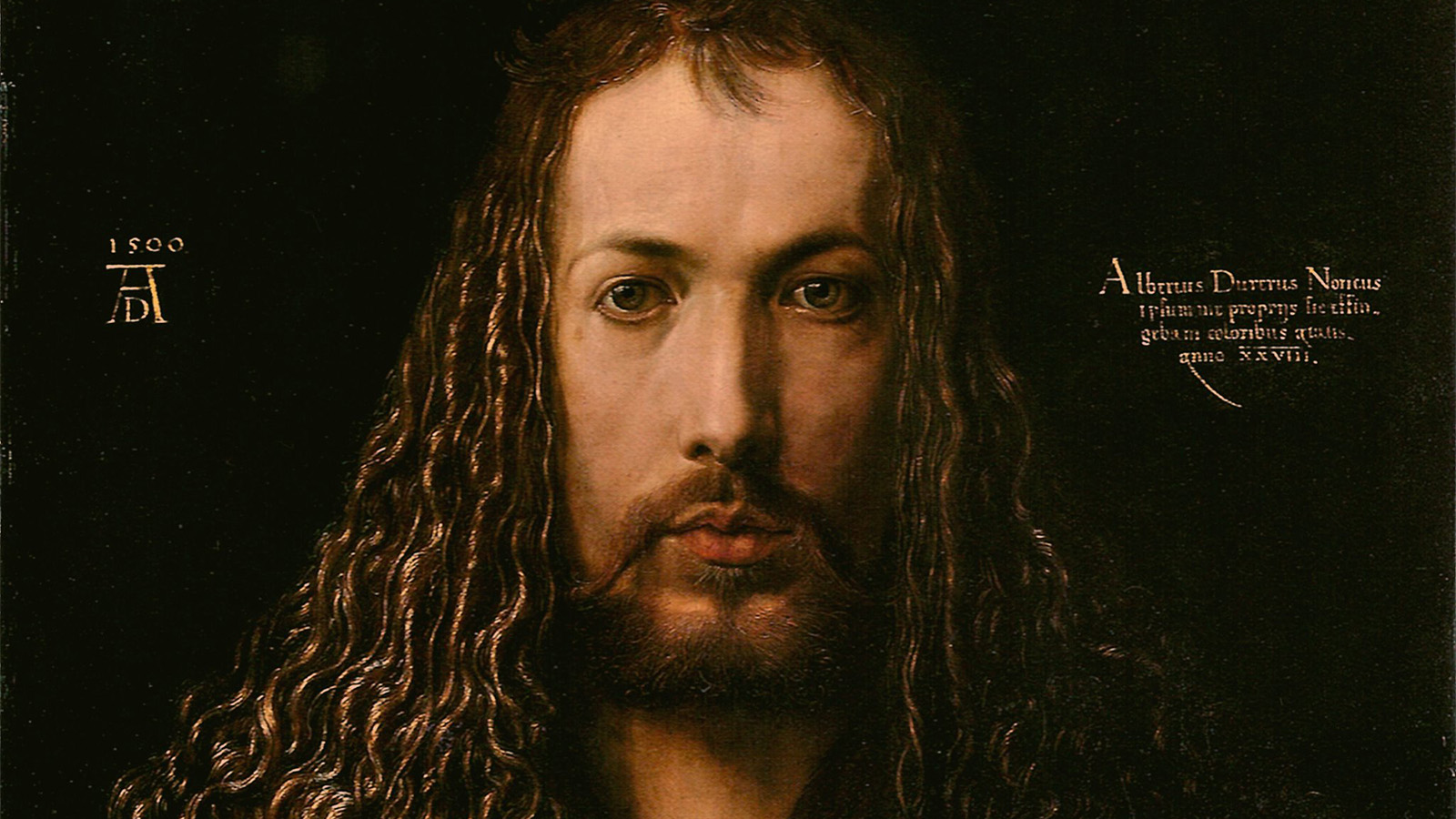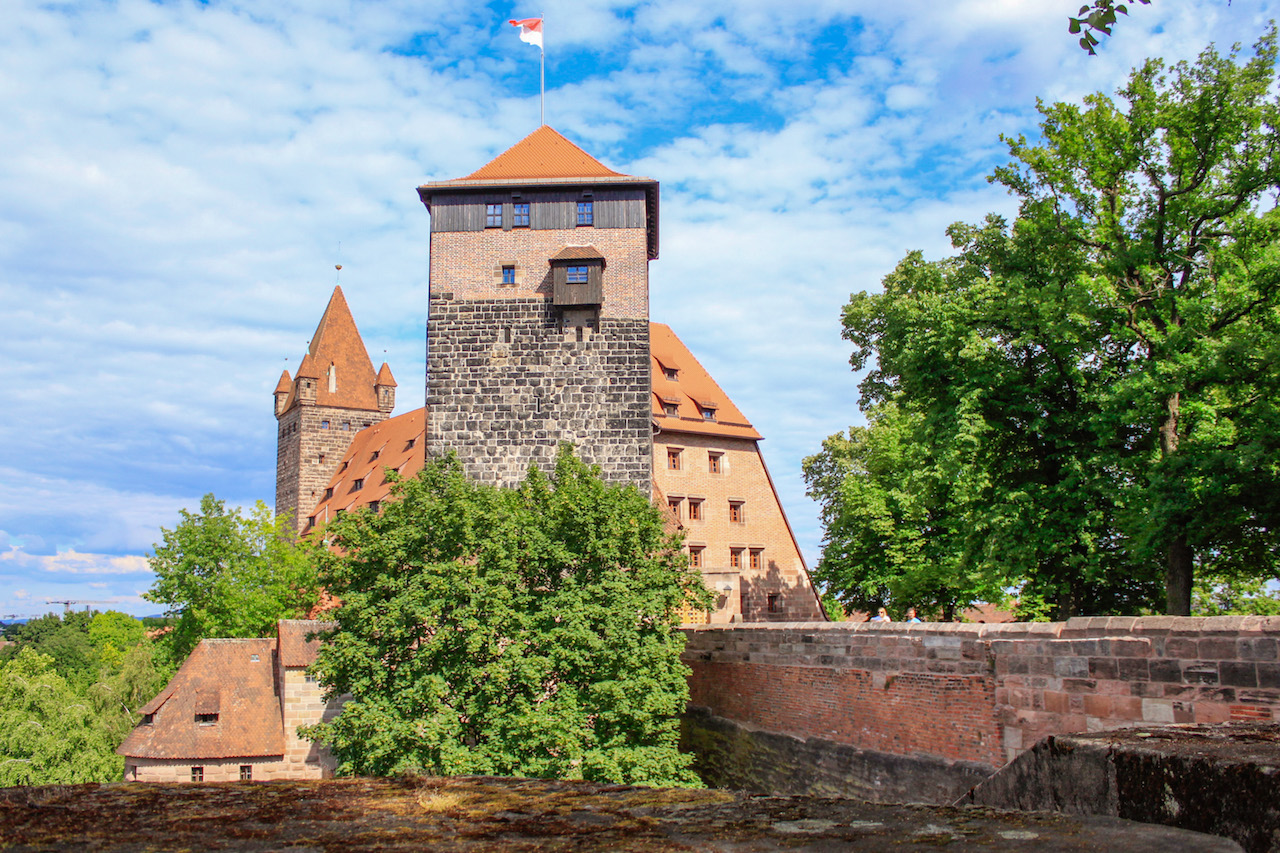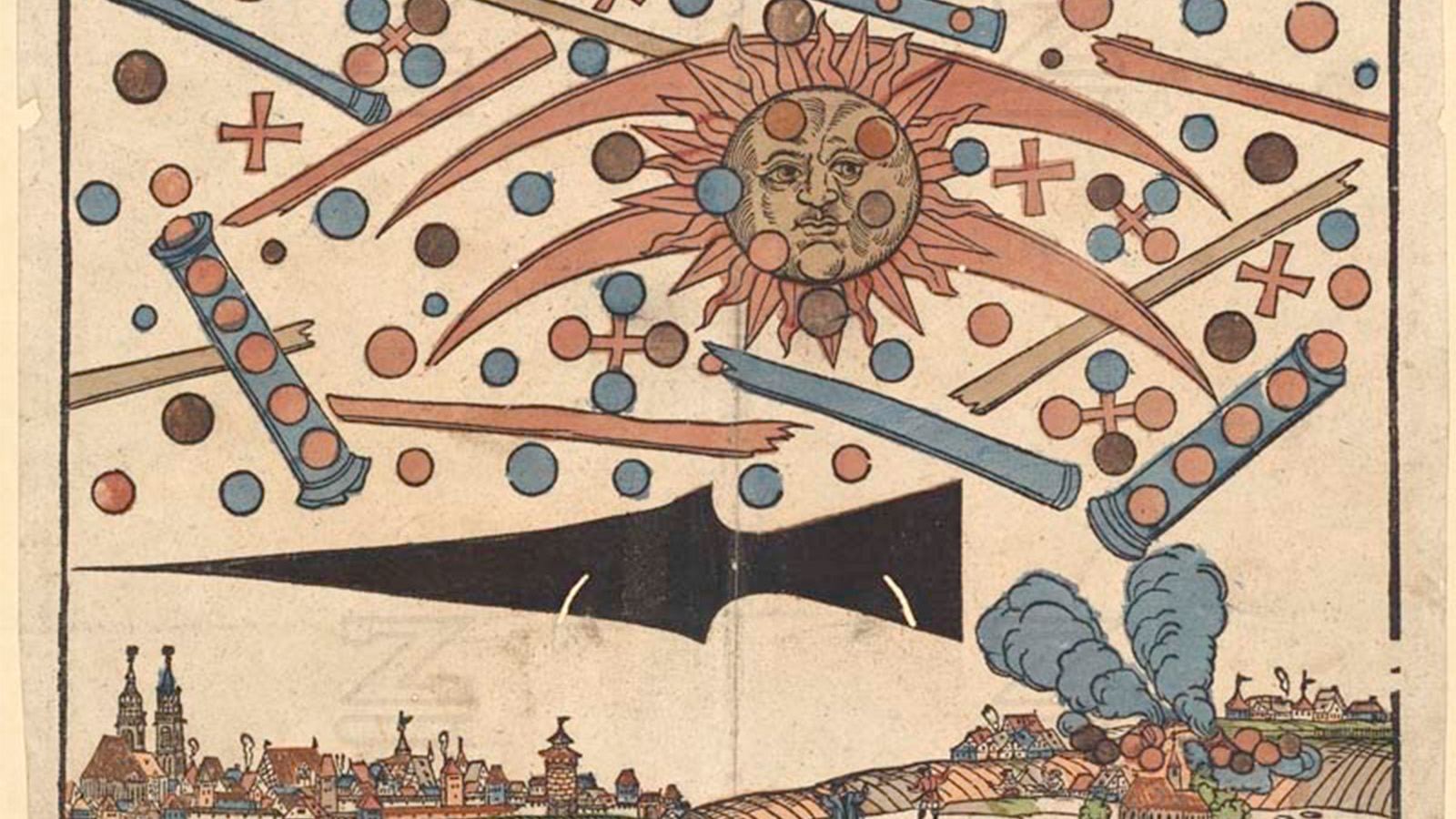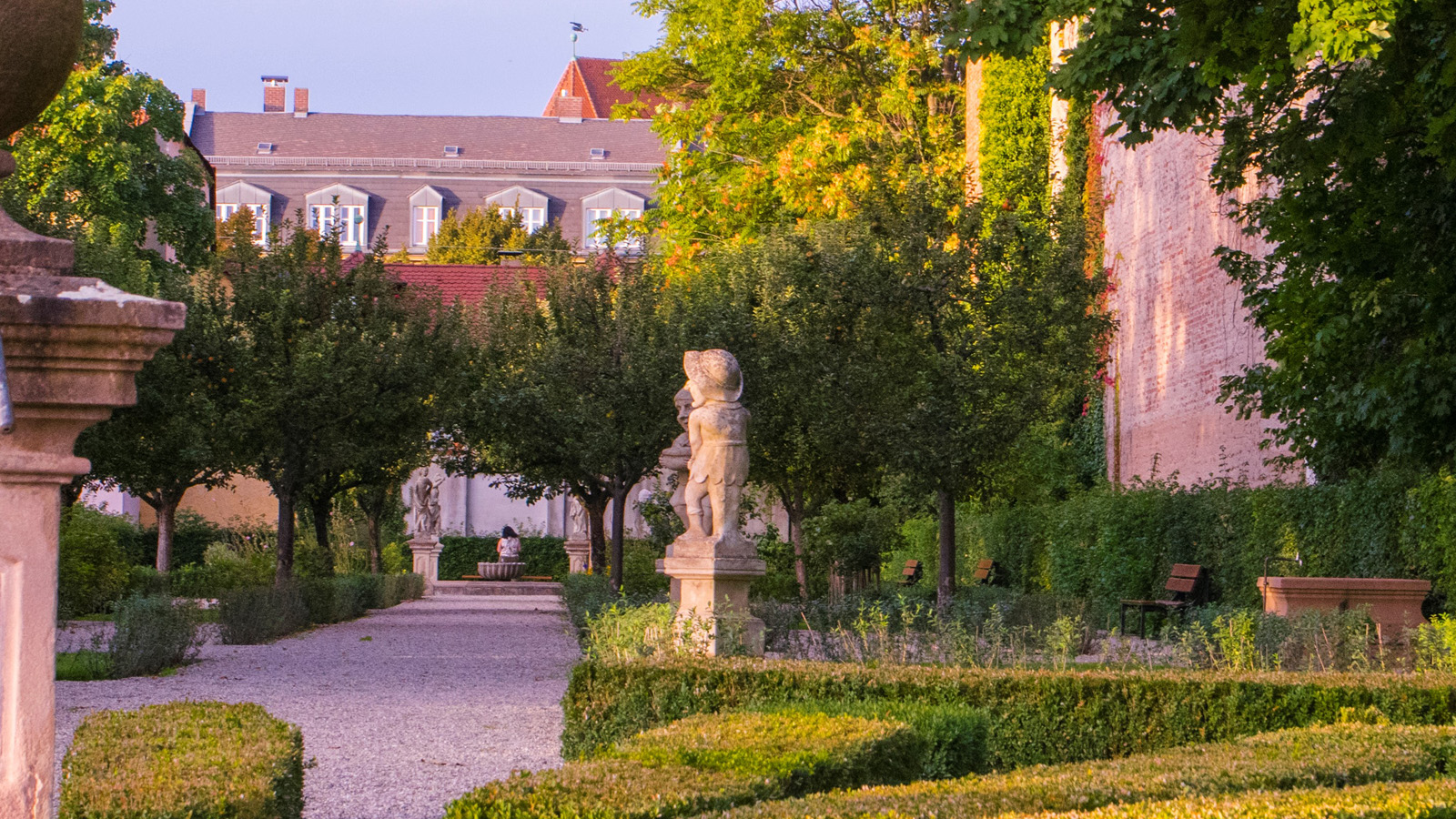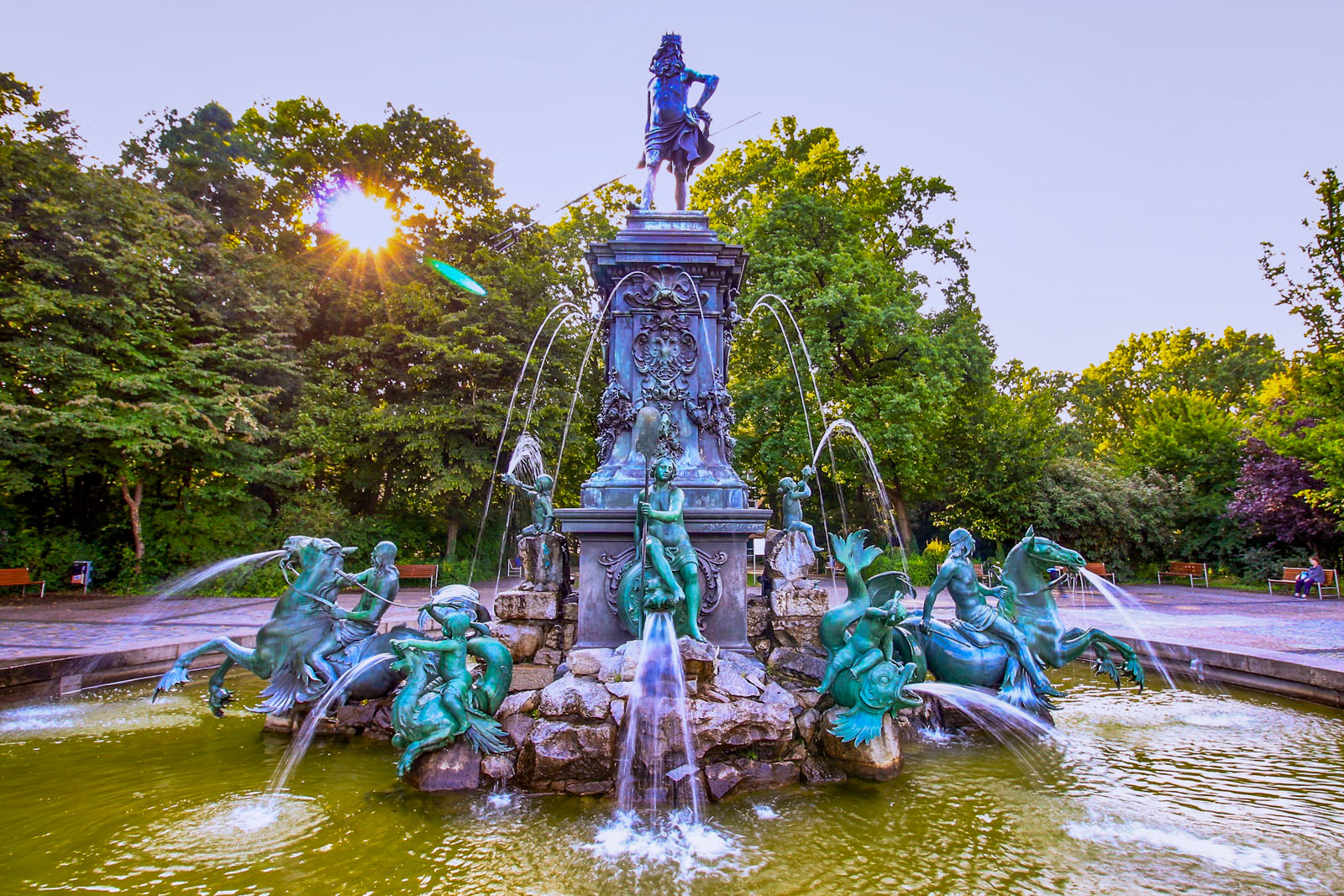Well, my dears, I’m sure you all know that the old town of Nuremberg consists of two districts; St. Lorenz to the south of the river and St. Sebald to the north, both of which fit as snug as a bug inside the old city walls. Being such pious folk, the people of Nuremberg named both districts after saints. Now, it’s St. Sebald, Nuremberg’s patron saint, who I’m going to introduce to you today. Facts about Sebaldus (Sebald, or Seb to his friends), I can tell you, are hard to come by. No one even seems to know exactly when he was here – some say he died in 770 – others say he died in the mid 11th century at the time of Holy Roman Emperor Henry III. Well, let’s just say it was long ago when Nuremberg was just a twinkle in the eye of some real estate agent.
There are also many stories about where Seb came from. Some say he was the son of a Danish King and Queen who prayed to God to give them a son promising to raise him a devout Christian. To cut a long story short, this son marries a beautiful princess and on the day of their wedding, demands her eternal devotion and then disappears never to be seen again. Well, if you ask me, that’s no way to carry on, even if you are Danish and royalty. Apparently, after disappearing, he gave away all of his money and worldly belongings, wandering far away dressed in a dark robe, and lived for 16 years as a hermit. He became known for curing the lame and giving sight to the blind. As more and more people sought him out to heal their ills. Now, when the Pope heard of Sebald and his miracles, he ordered him to convert the heathen in the forests north of the Danube.
Others say Seb was an Anglo Saxon (not another one) sent by the Pope (who else) as a missionary to convert those Germanic tribes and bring some civilisation to this part of the world.
From the 7th century, missionaries were sent forth from Rome to show the nice people living in the forests of Germany what a good idea it would be to stop all the nonsense about gods called Wodan and Donar and convince them to believe what some guy had said in a faraway country the poor forest dwellers had never heard of a few hundred years earlier. Understandably, some of the German people said they quite liked their Wodans and Donars and didn’t want to change them for anything or anyone else. They often took great offence when strangers kept going on and on about this Christ guy deciding to shut them up once and for all by murdering them.
Now obviously, our hunky hermit Seb was different. He kept to himself, as a nice hermit would, living his days in the woods northwest of Nuremberg, about where Poppenreuth is today, and he was definitely one mega missionary. When he managed to convince the locals to abandon Wodan, Donar, and their other gods in exchange for just one God, everyone thought he just had to be a miracle worker. By all accounts, he was also a really cool guy, helping old ladies cross the street and always taking the side of the simple everyday man, which of course, went down a treat with the local Nuremberg people. So much so, that hundreds of years later, they still held him dearly in their hearts. When a church was built in the town below the castle, he became its co-patron with St. Peter, and there, his relics were laid. Eventually, they even convinced the Pope to make him a saint, and he was canonized in 1425. The people of Nuremberg were so happy and proud of their new patron saint that they organized a procession around the town that lasted eight days. Yes, they celebrated for eight whole days! Now that must have been a party to remember. As my Irish grandfather always said, “You can always rely on a catholic to throw a good shindig.”
When kings and emperors came to Nuremberg, they would kneel before Seb’s relics. Soon, Nuremberg decided that something bigger was needed to give these relics the dignity they deserved. So they asked a local craftsman Peter Vischer and his boys to make a suitable monument to house the relics. Well, Peter certainly didn’t hold back. His first design was a 15-meter high gothic-styled monstrance. In fact, the first pourings were made from this mishap of a design which we can see from the oversized columns. Fortunately, it took them so long to make, 11 years in total, that the renaissance arrived from Italy just in time and defined most of the design.
It is still almost five meters high and weighs several tons, and you might not believe this, but the whole thing is carried by 12 snails and four dolphins, my goodness! Apparently, they are symbols for the resurrection. On the corners representing the biblical and heathen antiquities are those lovelies Samson, Hercules, Nimrod and Perseus. Aren’t they just magnificent! Four reliefs on the long sides tell the miracles which Seb worked, and Seb himself is represented with a pilgrims’ staff and church on the smaller west side gazing towards the altar. On the opposite east side, the craftsman Peter Vischer is depicted, dressed in his working apron of course. At eye level, the 12 apostles and at the very top, there they are again – the prophets. I’ve heard the whole thing is considered the most important cast-iron work of German art.
The monument, which sits in the Sebaldus Church, encloses the silver-plated shrine in which the relics of St. Sebald are laid inside the most elegant crimson pockets. The shrine decorated with the coat of arms of Nuremberg and the Holy Roman Empire is similar to that in which the imperial regalia was kept from 1424 to 1796 and which today sits in the German National Museum. The similarity of the shrines shows what significance our wondrous Seb had at that time. During festive processions, the shrine was carried by high ranking councillors, that is, until the city became protestant in 1525, from whence such worship of saints and relics was forbidden. Oh dear. Still, if you want to celebrate St. Seb, his feast day is 19th August.
What were the miracles that Seb became so famous for? Well, my dears, that’s a story for another time. Look after yourselves and do enjoy wonderful Nuremberg.


